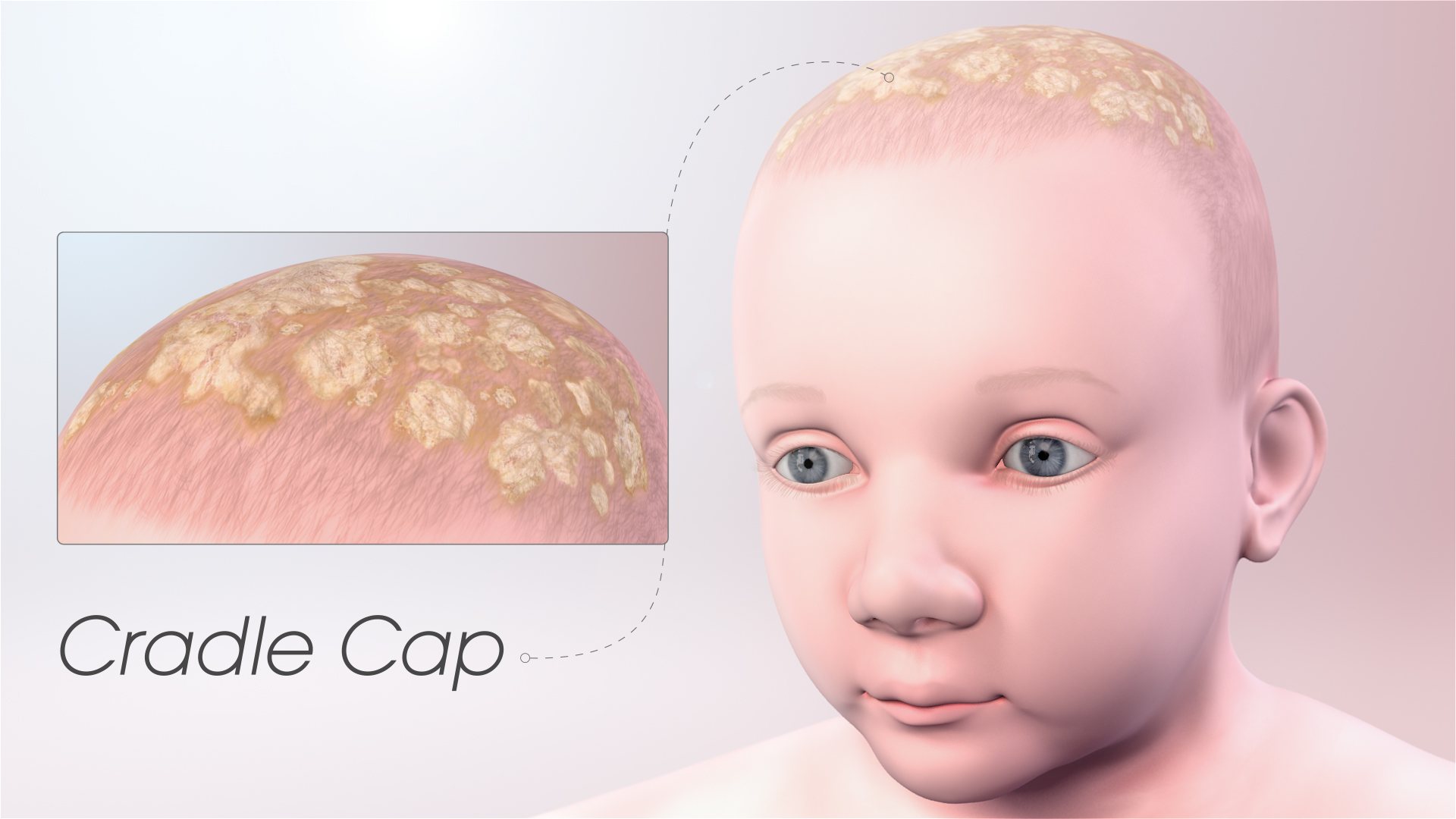Many newborns get rough scaly patches on their scalp. This is called cradle cap. It is also known as crusta lacteal, milk crust, honeycomb disease and infantile seborrhoeic dermatitis. It is a very common condition and usually appears within the first three months of a baby’s life. It is a safe condition and does not cause any discomfort to the baby because it does not cause pain or itchiness. It is not contagious. It causes thick white or yellow patches on the scalp that are not easy to remove. Cradle cap occurs in around 10 percent of babies in the first month and its occurrence increases to around 70 percent in babies by three months of age.

Symptoms
The usual signs and symptoms of cradle cap are:
- Thick crust or patchy scales on the scalp
- Skin flakes
- Mild redness on the scalp
- Skin covered with flaky white or yellow scales
Cradle cap usually starts on the scalp and spreads to the skin behind the ears, eyelids, nose and groin.
Causes
The causes of cradle cap are not clearly identified. It may be due to overactive sebaceous glands or a fungal infection or both. The sebaceous glands produce too much sebum and this leads to the old skin sticking to the scalp instead of drying off and falling. The mother’s hormones get passed into the baby before they are born and these hormones could cause the oil glands to be overactive and could also be responsible for the fungal infection. Cradle cap is neither contagious nor is it caused by poor hygiene.
Treatment
Most cases of cradle cap need no medical intervention and disappear on their own within a few months. It is often required that the baby’s head should be washed daily with a mild shampoo. If there is heavy scaling on the scalp, then oil must be applied to the baby’s head for a couple of hours before shampooing. After shampooing, the baby’s hair must be brushed very gently with a soft brush and this helps in loosening the scales. These steps usually ensure that that the cradle cap gets treated within a few months. In more intense cases of cradle cap, the doctor may prescribe an anti-fungal shampoo or even mild antibiotics.
Fortunately cradle cap is commonly not a serious condition. Once the scales are gone, the baby’s head should be washed often, once in two or three days and brushed gently to prevent the re-occurrence.
Disclaimer: The information in no way constitutes, or should be construed as medical advice. Nor is the above article an endorsement of any research findings discussed in the article an endorsement for any of the source publications.
Sources-
- https://www.medicalnewstoday.com/articles/218942.php
- https://www.mayoclinic.org/diseases-conditions/cradle-cap/diagnosis-treatment/drc-20350400
- https://www.webmd.com/skin-problems-and-treatments/treating-cradle-cap-in-children#2
Amniocentesis or "puncture of the amnion," refers to the process of aspirating an ounce of amniotic fluid that surrounds the fetus in the mother’s womb. The amnion is a thin-walled sac of fluid in which a developing fetus is suspended during pregnancy.
Read More..
Sleep may seem simple and static, but, in reality, sleep is a complex and dynamic process. Researchers have discovered distinct, measurable changes in both the body and brain, occurring regularly and predictably throughout the night.
Read More..











